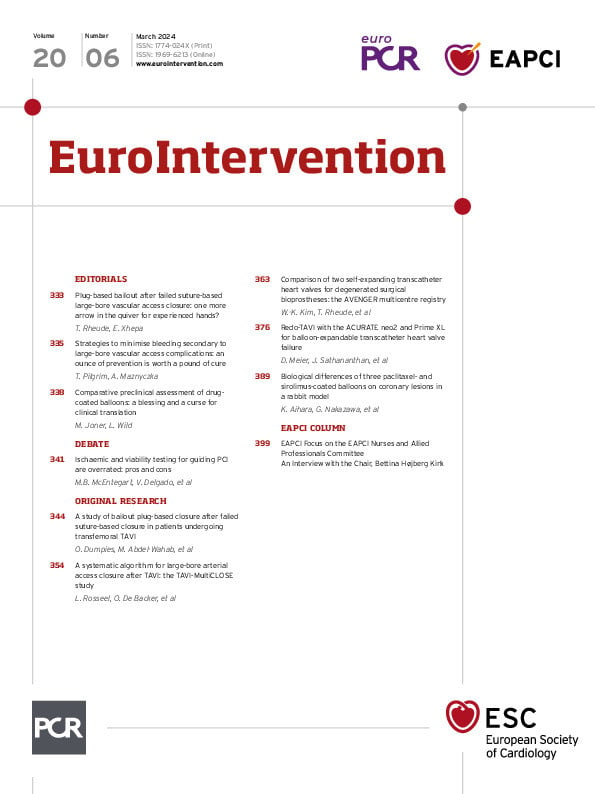Drug-coated balloons (DCB) represent an established technology aimed at combining the dilatation of obstructive atherosclerotic vascular lesions with the rapid transfer of an antiproliferative drug to avoid neointimal hyperplasia. In contrast to standard drug-eluting stent (DES) technology, DCBs are targeted to provide antirestenotic efficacy in the absence of a persisting vascular prosthesis, consequently avoiding chronic vascular irritation and resultant inflammation. With the mainstream introduction of DCBs in 2006, Bruno Scheller and colleagues were able to demonstrate their antirestenotic efficacy in the clinical setting of coronary in-stent restenosis relative to plain old balloon angioplasty (POBA) in a randomised controlled trial1. Subsequently, a wealth of studies resulted in European guidelines recommending their primary use in this specific clinical setting2. Even today, clinical adoption of their broader application in other coronary lesion-specific settings, such as de novo lesions, bifurcations and small vessel disease, is slow despite the existence of dedicated studies to support their use. In addition, reports about the biological consequences of downstream particulate shedding during the deployment of paclitaxel-coated balloons (PCB) instigated a careful review of the existing literature,...
Sign up for free!
Join us for free and access thousands of articles from EuroIntervention, as well as presentations, videos, cases from PCRonline.com




